Today’s post comes courtesy of Kathy Nichols, long-time project volunteer and a regular contributor to this blog. Thank you Kathy, for another great piece of research!
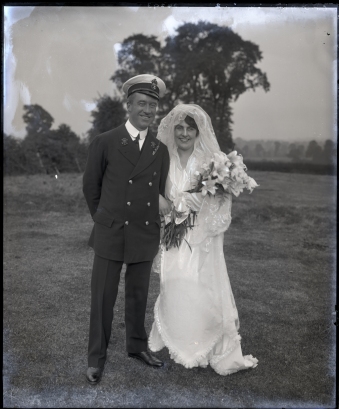 All the Nice Girls Love a Sailor* – The Home Front, Summer 1915
All the Nice Girls Love a Sailor* – The Home Front, Summer 1915
One of the joys of working on the Past on Glass project is the way the photographs draw you in and make you curious about the people and places shown in them. The images often act as a key to rediscovering parts of our not so distant history.
The group of photographs taken for the wedding of Chief Petty Officer Mayor definitely had that effect – one showing a group of naval personnel and described as ‘RNAS Honor Oak Gun Station’ has shed light on a mostly forgotten part of the First World War…..
At the start of World War One the military aircraft was still a fairly new invention; the British Army had the Royal Flying Corps but most of it had been sent to France. There was, as yet, no anti-aircraft section but with the threat of airborne attacks on Britain an organised defence was clearly needed.
The Royal Navy had its own air service, the RNAS, which was established on 23rd June 1914 and had started to develop guns for anti-aircraft use. The Admiralty, under the leadership of Winston Churchill, set up an anti-aircraft Corps within the RNAS consisting of men from the Royal Naval Volunteer Reserve and took responsibility for the air defence of the coast of Britain and, for a short time, London.
Anti-aircraft gun stations were set up around London to protect Whitehall and other strategic places such as the Thames Docks, Woolwich Arsenal and the ordnance factory at Waltham from the terrifying Zeppelin Airship raids which began in May 1915.
One such gun station was at One Tree Hill in Honor Oak, South East London from where there is a good view over the City.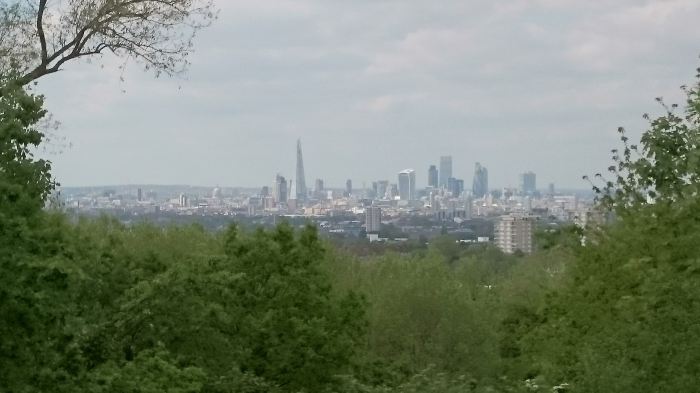
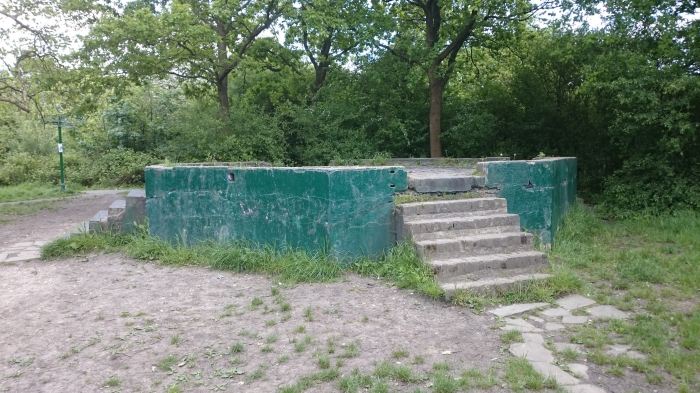 One Tree Hill is now a public park and nature reserve managed by Southwark Council but the World War One gun emplacement is still there.
One Tree Hill is now a public park and nature reserve managed by Southwark Council but the World War One gun emplacement is still there.
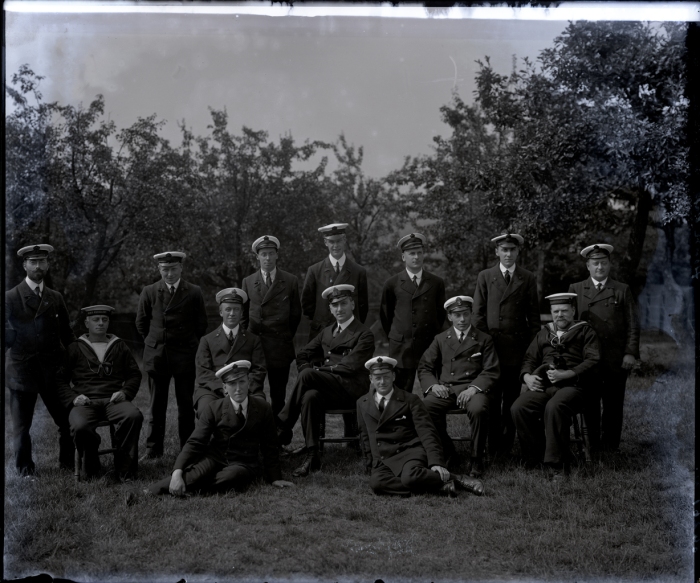
RNAS Honor Oak Gun Station, 1915
In this photograph some of the men have hat bands displaying HMS Excellent. The RNAS gunnery training school was based onshore at Portsmouth and was designated HMS Excellent. It was cleared at the outbreak of war, so perhaps these men had been based at the school before being assigned to the newly formed Anti-Aircraft Corps.
The subjects look relaxed and happy and the fact that the photographer was a friend and crewmate probably contributed to that. David Knights-Whittome (pictured here on the far left of the image) joined the RNVR in 1914 and was assigned to the RNAS Anti-aircraft Corps with the rank of Able Seaman. When the army took over responsibility for the London gun stations in 1916 he was transferred to the Royal Garrison Artillery Special Reserve with the rank of 2nd Lieutenant. He relinquished his commission in 1920 and retained the rank of Lieutenant.
It is possible that Mayor was in charge of Honor Oak Gun Station as it was usual to have a Chief Petty Officer in that role. Gordon Mayor, (born George Gordon Mayor 9th April 1876 at Twickenham) was a stockbroker before the outbreak of war. He is listed as being in the Royal Naval Reserve from 1914-1915.
Although the 10 x 12 inch glass plate negative is described as ‘RNAS Honor Oak Gun Station’ on the original envelope, it is likely that the photograph was taken in the Brentwood area of Essex and that the title refers to the crew rather than the location. It seems that it was taken close to the time of the wedding which was in the summer of 1915. The date on the envelope is 27 August 1915. Records show that George Gordon Mayor was married in Essex in the summer quarter of 1915 and we have another photograph showing the bride and groom with crewmates. The envelopes of the two wedding photos have the date October 1915 when orders for extra copies were made.
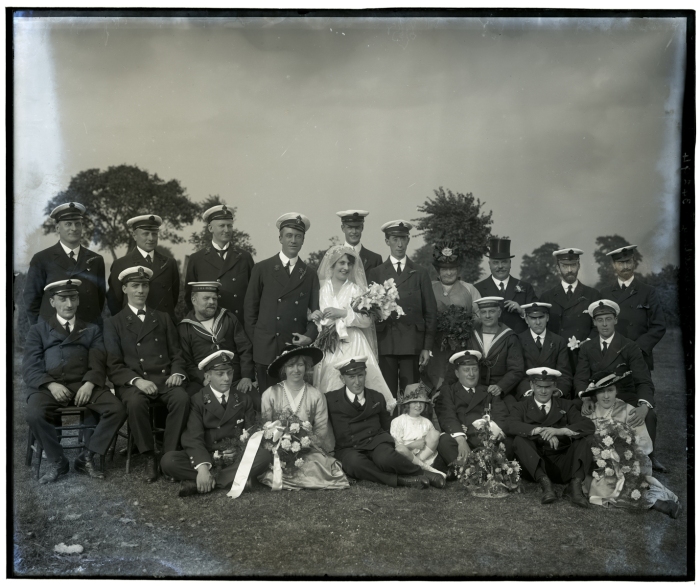
Mayor Wedding, 1915 (Knights-Whittome is pictured on the far right of the group image)
We believe the bride was Millicent Kirke Vincent from Brentwood in Essex. The 1911 census shows that she was born about 1895, the daughter of a veterinary surgeon and his wife and that she was an actress at the Gaiety Theatre in London.
While the image of a Gaiety Girl in dressed in a risqué costume may spring to mind, it seems that the idea of chorus girls clad in burlesque outfits stems from the years between 1860 and 1890. After this time burlesque began to go out of fashion and the more family friendly Edwardian Musical Theatre became popular. The story lines were light and frothy and often involved a romance between a working class girl and an upper class man.
The Gaiety Girl was reinvented as a role model for young women and costumes became much more demure. When not on the stage, the polite, well-behaved actresses were encouraged by theatre manager George Edwardes to be seen taking tea in the West End wearing the latest fashions.
After one actress married a member of the aristocracy it became quite the thing in the Edwardian era to put one’s daughter on the stage in the hope that she would find a good match – if not a lord then a stockbroker or banker. Well off gentlemen (known as ‘Stage Door Johnnies’) would queue at the stage door for the chance to take their favourite actress out to dinner and sometimes love would blossom!

Blog Written by Kathy Nichols, Project Volunteer
*A popular music hall song by A.J. Mills & B. Scott, published 1909
Sources: Wikipedia, Google, historylearningsite.co.uk, Ancestry, National Archives




Hello, these are my grandparents!!Please contact me.
LikeLike
Hello can you please contact me? these people are my grandparents. Thanks M.A. Godfrey
LikeLike